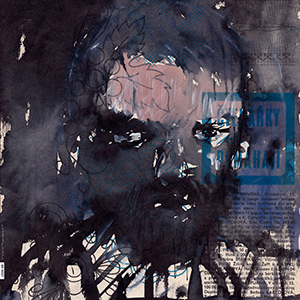 I have been a fan of Piotrowicz’s electronic, usually modular synthesizer-centric work for a number of years now, and I have quite enjoyed following his evolution and development as an artist. With Samoobrona, however, I went in with some trepidation. Not because of my lack of faith in his work, but more the nature of the recording: a radio play exclusively in Polish. I was happy to find, however, that his electronics are still the primary element throughout the two side-long compositions and even without following the narrative, the result was enthralling.
I have been a fan of Piotrowicz’s electronic, usually modular synthesizer-centric work for a number of years now, and I have quite enjoyed following his evolution and development as an artist. With Samoobrona, however, I went in with some trepidation. Not because of my lack of faith in his work, but more the nature of the recording: a radio play exclusively in Polish. I was happy to find, however, that his electronics are still the primary element throughout the two side-long compositions and even without following the narrative, the result was enthralling.
The play, originally written by Helmut Kajzar between 1974 and 1975, was recorded three times previously, once for the radio and the two remaining times in the authors home.Piotrowicz and director Lukás Jiricka chose to strip the dialog down and include stage directions in the narrative, transforming the author’s work while remaining faithful to his original intent, especially on the themes of physicality and death.This performance features acting by Klara Mielawka, Joanna Drozda, and Milogost Reczek.To be fair, the included insert features an English translation of a selection of dialog presented in the performance, so not being able to understand Polish does not mean narrative part of the work could not be understood.I did, however, intentionally listen to it first solely as a piece of music to form my early opinions and impressions.
For the most part, anyone familiar with Piotrowicz's previous works are going to feel comfortable here, since his use of synthesizers and electronics are in full effect.The piece opens with backwards and forwards electronic sounds and noises, with spoken word appearing early on, but never being overly dominant in the mix.It is a chaotic piece, with some passages sounding more in the spirit of free improvisation, but constructed entirely via electronic instrumentation.
Surges of sound are introduced as the mix becomes denser, with abrupt changes adding to an ever-growing sense of tension.The dialog part of the performance is more heavily mixed and collaged, treated at times almost like another instrument rather than the centerpiece (an intentional decision by Piotrowicz and Jiricka).Eventually he works in an almost rhythmic electronic thud that is rhythmic in the most liberal application of the word, as noises shift and change chaotically.The piece concludes with clanking machinery noise, voice loops and swirling synths.
The second half of the performance continues the same themes and concepts sonically.Hints of rhythm appear, simplistic but effective in their application.Following wobbling pitched electronics, voices are cut up, delayed, and paired with more aggressive almost pseudo-rhythms that do an excellent job at conveying aggression without being too blunt.Amongst this disorienting collage of noises, Piotrowicz works in synthesizer passages that brilliantly approximate the dissonance of an electronic power drill.
Even though this is technically an audio play, Robert Piotrowicz and Lukás Jiricka do not follow convention and treats the actor’s work as any other instrument in a composition.With their subtle treatment of the dialog and Piotrowicz's consistently exceptional ability at creating bizarre electronic sounds, Samoobrona works as a narrative of anger and madness without even a single word being understood.
samples:
 
Read More

